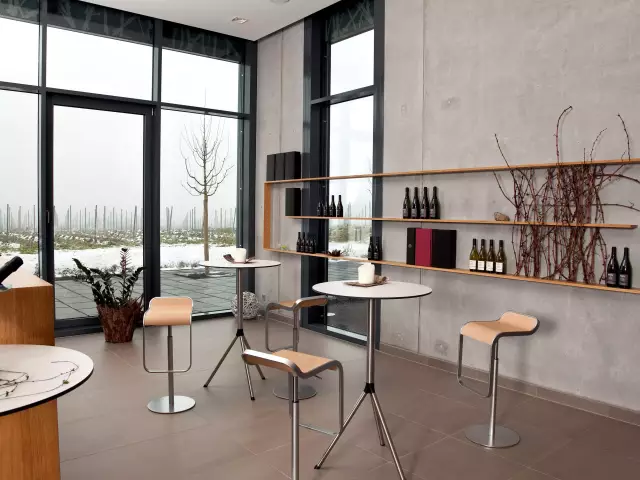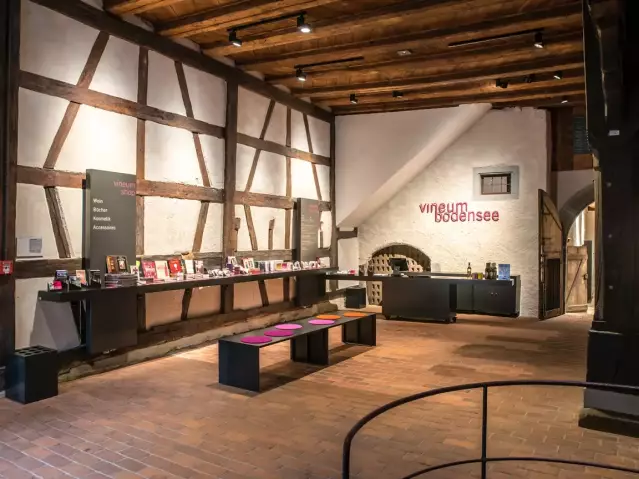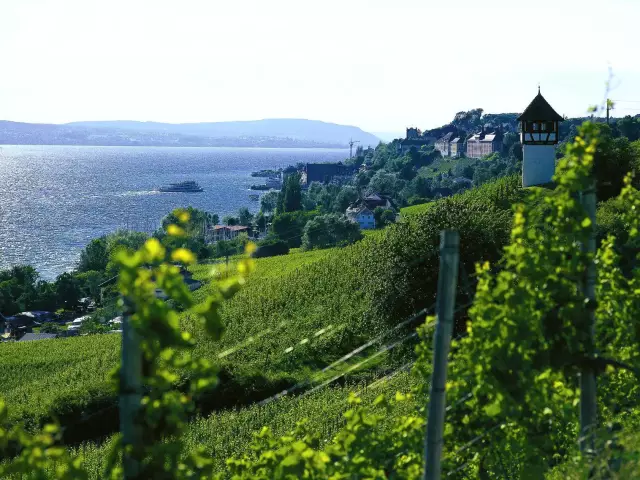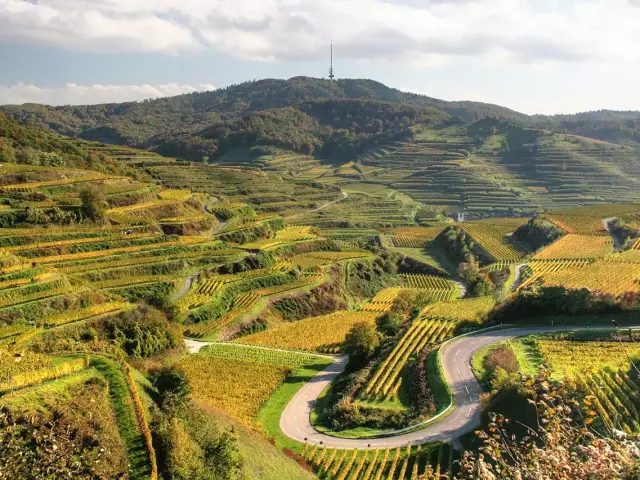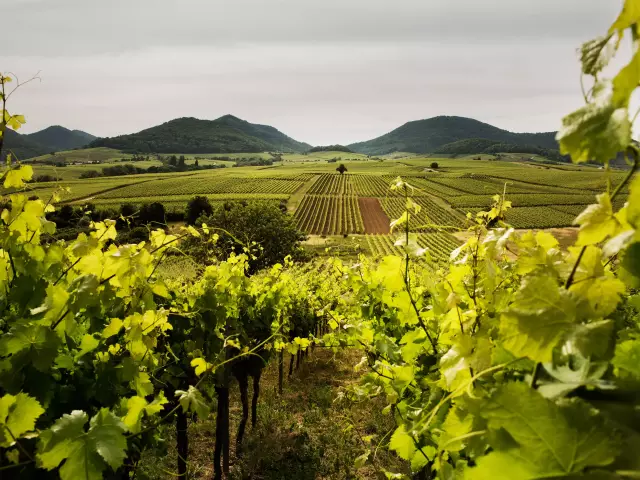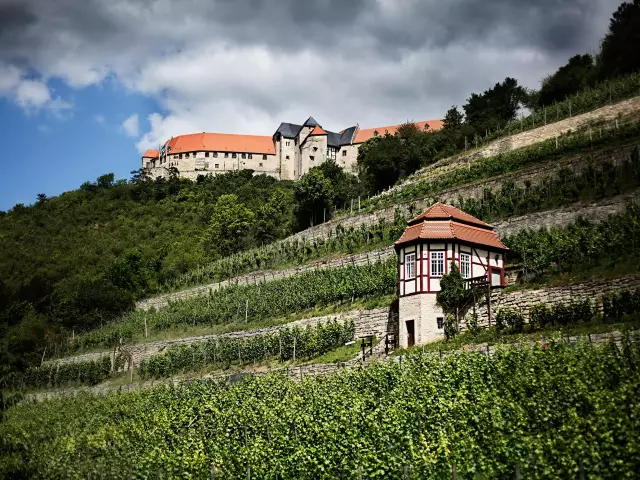Baden
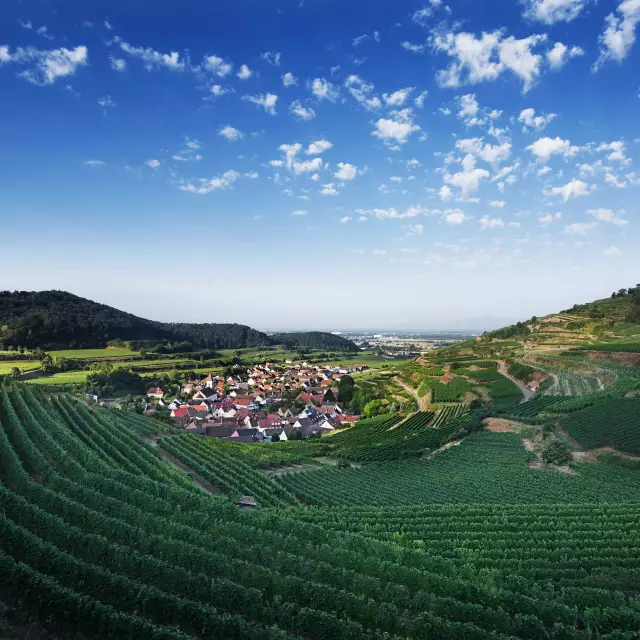
The Baden winegrowing region, with 15,727 hectares of vineyards the third largest in Germany, extends in a north-south direction over a length of about 400 kilometers.
Facts
-
15.679 ha
Vineyard area
-
5.029 ha
single vineyards
-
16
large vineyards
-
306
Einzellagen
Baden - Blessed By the Sun
The wines along the Baden Wine Route are correspondingly varied. Wine connoisseurs have long agreed that they are "blessed by the sun". This is why Baden is the only German wine-growing region to be assigned to the EU wine-growing zone B, which means that the wines must have higher Oechsle degrees (more ripeness and natural sugars at harvest) than anywhere else. Plenty of sunshine hours and Germany’s warmest places on the Kaiserstuhl, ensure that this is the case.
The Baden region extends from the Tauber in the north to Lake Constance in the south. The nine areas into which the growing area is divided differ in terms of landscape, soil types and climate, so a wide variety of wines can be made here. In the north of the growing region, in Tauberfranken, on the Badische Bergstraße and in Kraichgau, the focus is on Rivaner, Riesling and Pinot Meunier.
In the middle of Baden, in the Ortenau, Pinot Noir, Riesling (also known as Klingelberger) and Spicy Gewürztraminer (Clevner) is predominantly grown, and in the south, in the Breisgau, on the Kaiserstuhl and in the Tuniberg, red and white pinot dominates. The old white wine variety Gutedel is cultivated in Markgräflerland between Freiburg and the Swiss border, whilst Pinot Noir and Müller-Thurgau thrive at Lake Constance.
Baden is the most important German region for Pinot Noir. It is very popular in all its diversity of styles and flavors - also as rosé or Weißherbst. Velvety, powerful wines are increasingly matured in barriques. This isn’t the only Pinot here. More than half of the vineyards are planted with Burgunder varieties: Spätburgunder, the forementioned Pinot Noir; Grauburgunder, a dry, food-compatible wine, here often marketed under the synonym Ruländer to denote a richer, fuller-bodied (and sweeter) style; and Weißburgunder, neutral enough to accompany many foods. The local ‘Badisch Rotgold’ is the name of the rosé-colored specialty made from Pinot Noir and Pinot Gris.
Many visitors are attracted to Baden for the mild climate, pretty wine villages and the scenic diversity, for example on the slopes of the Odenwald and Black Forest or on the shores of Lake Constance. However, historic cities such as Heidelberg, Constance, Baden-Baden, Karlsruhe or Freiburg are also very popular with tourists, as well as a wide range of activities for action holidays, be it cycling along the Tauber or a walk on one of the numerous wine hiking trails.
Some spa towns from Badenweiler to Baden-Baden are recommended for wellness splurges, preferably in connection with wine. Over 100 wine festivals invite you to celebrate, some showing the range of wines from each area, others are set in an historic atmosphere with medieval traditions. The numerous winegrowers' cooperatives in Baden, more than 50, also regularly open their wine cellar for tastings. The best overview of current offerings from Baden cellars is at the Baden Wine Fair in Offenburg each May. Another worthwhile visit is to the oldest Baden wine market in Müllheim, Markgräflerland, which is held every year in April, a tradition dating back to the 19th century.
Overview Baden
Geographical location: The north-central portion of the Tauber Valley and the upper Rhine Valley adjacent to the Black Forest, stretching from Heidelberg to the Swiss border and the Bodensee (Lake Constance)
Major town(s): Heidelberg, Karlsruhe, Baden-Baden, Freiburg
Climate: Sunny and warm; the Kaiserstuhl district is Germany's warmest area
Soil types: Shell-limestone in Tauberfranken. Elsewhere, a wide variety including keuper, loam, loess, granite, clay, limestone and sand. The Kaiserstuhl is an extinct volcano, while glacial deposits (moraine) are typical of the Bodensee district.
Vineyard area (2022): 15,727 ha · 9 districts · 16 collective vineyard sites · 300+ individual sites
Grape varieties 2022 [white 61% · red 39%] : Spätburgunder (32,8%), Müller-Thurgau (14,3%), Grauburgunder (14,7%) as well as Weißburgunder, Gutedel and Riesling.
Marketing: Most growers are members of the ca. 100 cooperatives that produce and market about 85% of the region's wine. The regional cooperative cellars in Breisach are the largest in Europe and the fourth-largest in the world. Exports play a minor role. Nearly half of production is sold in supermarkets; the other half in wine shops and restaurants, or directly to final consumers.
Signposted routes through wine country: Badische Weinstraße (driving) · the northern portion of the Romantic Road (driving) traverses the Baden portion of the Tauber Valley, as does the Main-Tauber-Fränkische Radachter (cycling) · the Castle Road (driving) passes through the Badische Bergstraße at Heidelberg · Weinstraße Kraichgau-Stromberg (driving) · Markgräfler Wiiwegli from Freiburg to Weil (hiking & cycling).
Varietals

Highlights of wine culture in Baden
-
Highlight Professor Blankenhorn Wine Trail of the Freiburg State Winery Professor Blankenhorn Wine Trail of the Freiburg State Winery
Learn more
Winesights
Wine hike Ortenau Wine Trail
The Baden Wine Route offers passionate wine hikers a variety of routes over a total of 160 kilometers.

Contact
-
Badischer Weinbauverband e.V.
79100 Freiburg im Breisgau-Süd Merzhauser Straße 115 Baden-Württemberg Germany



